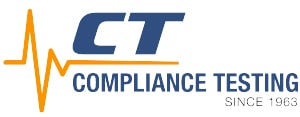Get Free Help From Our Engineers With FCC & CE Compliance
Need help complying with FCC or CE regulations? We work with businesses and individuals across the country, including in , to achieve compliance with FCC and CE standards for electronics.
Click the “Talk to Our Team” button or call us on 866-540-5287 to ask our engineers your question about FCC/CE testing and compliance, or to request a free quote for your device and achieving the FCC and/or CE mark.

Before you make your electronic device available to the public, you need to ensure that it meets a certain set of regulatory standards.
These standards have been established by two regulatory bodies: the Federal Communications Commission (FCC) in the United States and the European Commission (EC) in Europe.
Depending on where you plan to sell your electronic product, you’ll need to familiarize yourself with the rules and regulations for your chosen market and comply with them.
While the FCC and CE marks share certain similarities, they also differ in a number of notable ways. Below, we’ve discussed the main differences between FCC and CE regulations, as well as how you can determine which testing option is the best fit for your needs.
If you’re preparing to bring your product to market and need help with FCC and/or CE testing, you can contact our team online or call us on 866-540-5287 for more information.
FCC: An Overview
The Federal Communications Commission (FCC) is an independent government agency in the United States that’s overseen by Congress. Its purpose is to regulate interstate and international communications by television, radio, cable, wire and satellite.
According to the FCC, all electronic goods that operate at a frequency of 9 kHz are required to undergo testing. The testing process aims to verify that eligible electronic devices adhere to the official FCC Code.
The FCC seeks to maintain a certain set of standards across all media types and channels for communication. It also aims to protect the interests of businesses and customers alike.
As the main authority in the technology sector, the FCC has the primary goal of overseeing all innovation, law and regulation in the communications field.
All products that have the FCC’s seal of approval have undergone rigorous testing. This official certification tells consumers that the electronic device they own is safe to use.
In addition, it asserts that the product does not prevent any other electronic devices in the same environment from functioning properly.
FCC Certification & Compliance
Electronic/digital devices sold in the United States are required to comply with FCC regulations if they are capable of producing radiofrequency (RF) emissions.
If your device is designed for commercial or industrial use, it’s classified by the FCC as a Class A device. If it’s designed for consumers, it’s classified as a Class B device.
Our full guide to the differences between FCC Class A and Class B goes into more detail about how the FCC treats different types of electronic devices.
Both types of devices are required to complete testing and comply with FCC regulations in order to be sold in the United States. We offer FCC testing services to help you reach compliance with these regulations and bring your product to market
CE: An Overview
The European Union designated the Conformitè Europëenne (CE) mark as its official emblem for regulating all goods sold in the European Economic Area (EEA). If your product carries the CE mark, you’re affirming that the item fulfills the EU’s New Approach Directives.
It’s worth noting that these directives don’t just apply to products sold within the EU. They also apply to goods that are manufactured or sold in the EEA.
Thanks to the widespread nature of the official CE mark, the emblem has become recognizable on a global scale, even among those who aren’t familiar with the EEA. All products with the CE marking have successfully fulfilled the following requirements:
- Fulfills all the requirements for the appropriate European product directives.
- Fulfills the requirements for the relevant European safety & performance standards.
- Meets its purpose and is not at risk of endangering lives or property.
By ensuring that these standards are met, the EU helps guarantee a greater degree of safety for goods sold in the EEA.
Contact Our Compliance Testing Team
Conducting testing and making sure you’re compliant with FCC and/or CE regulations is a key step in bringing your product to market. Failing to comply with regulations can result in serious problems for your business, including monetary penalties and legal action.
To make sure your devices are fully compliant, it’s critical to work with a trusted testing lab and complete the FCC and/or CE testing process.
As a specialist testing lab with 60 years of experience, we specialize in helping manufacturers carry out compliance tests and get the necessary certification for their wireless and electronic devices.
If you have a product you’d like to bring to market, or if you have any questions about the FCC and/or CE testing and certification process, you can contact our team online or call us on 866-540-5287.
Request a Free Quote From Our Team
Please enter your name, contact information, and any information about your device and the type of testing you need into the form below. Our team of engineers and compliance specialists will contact you as soon as possible with a free quote for your project.




